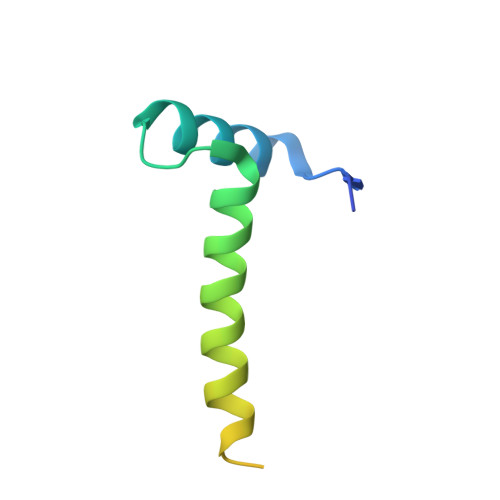Entropic pressure controls the oligomerization of the Vibrio cholerae ParD2 antitoxin.
Garcia-Rodriguez, G., Girardin, Y., Volkov, A.N., Singh, R.K., Muruganandam, G., Van Dyck, J., Sobott, F., Versees, W., Charlier, D., Loris, R.(2021) Acta Crystallogr D Struct Biol 77: 904-920
- PubMed: 34196617
- DOI: https://doi.org/10.1107/S2059798321004873
- Primary Citation of Related Structures:
7B22 - PubMed Abstract:
ParD2 is the antitoxin component of the parDE2 toxin-antitoxin module from Vibrio cholerae and consists of an ordered DNA-binding domain followed by an intrinsically disordered ParE-neutralizing domain. In the absence of the C-terminal intrinsically disordered protein (IDP) domain, V. cholerae ParD2 (VcParD2) crystallizes as a doughnut-shaped hexadecamer formed by the association of eight dimers. This assembly is stabilized via hydrogen bonds and salt bridges rather than by hydrophobic contacts. In solution, oligomerization of the full-length protein is restricted to a stable, open decamer or dodecamer, which is likely to be a consequence of entropic pressure from the IDP tails. The relative positioning of successive VcParD2 dimers mimics the arrangement of Streptococcus agalactiae CopG dimers on their operator and allows an extended operator to wrap around the VcParD2 oligomer.
- Structural Biology Brussels, Vrije Universiteit Brussel, Pleinlaan 2, 1050 Brussels, Belgium.
Organizational Affiliation:
















